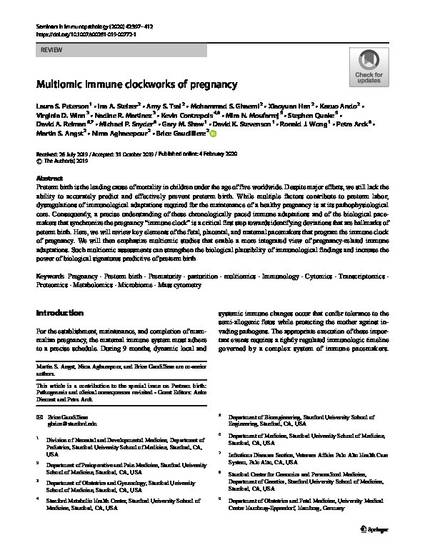
Preterm birth is the leading cause of mortality in children under the age of five worldwide. Despite major efforts, we still lack the ability to accurately predict and effectively prevent preterm birth. While multiple factors contribute to preterm labor, dysregulations of immunological adaptations required for the maintenance of a healthy pregnancy is at its pathophysiological core. Consequently, a precise understanding of these chronologically paced immune adaptations and of the biological pacemakers that synchronize the pregnancy “immune clock” is a critical first step towards identifying deviations that are hallmarks of peterm birth. Here, we will review key elements of the fetal, placental, and maternal pacemakers that program the immune clock of pregnancy. We will then emphasize multiomic studies that enable a more integrated view of pregnancy-related immune adaptations. Such multiomic assessments can strengthen the biological plausibility of immunological findings and increase the power of biological signatures predictive of preterm birth.
Available at: http://works.bepress.com/xiaoyuan-han/57/
